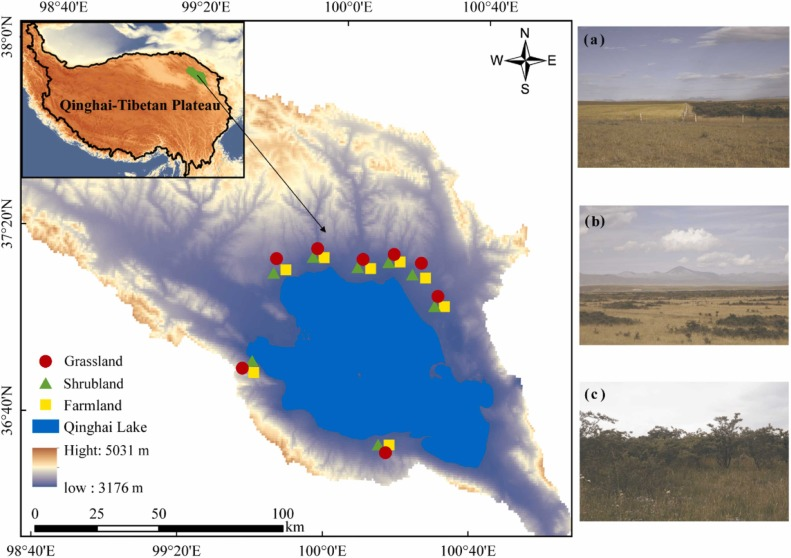Land-use changes have widespread impacts on terrestrial ecosystems. However, few studies have focused on the responses of soil environmental factors, soil microbial properties, and links between primary productivity, soil microbes, and soil multifunctionality during land-use change in the ecologically sensitive alpine areas on the Qinghai-Tibetan Plateau. In this study, we evaluated the effects of land-use changes from alpine grassland to farmland to shrubland on soil factors and soil microbial characteristics and investigated the associations between aboveground biomass, soil microbial diversity, network complexity, and soil multifunctionality in the Qinghai Lake Basin. The results showed that soil environmental factors and microbial community composition exhibited patterns of gradual recovery toward natural grassland along with the conversion of farmland to shrubland, and soil phosphorus content played a regulatory role in soil microbial restoration along with the conversion of land-use. Furthermore, we found that the recovery of soil microbial co-occurrence network complexity would require a longer time than that of microbial community composition and functional taxa after the conversion of farmland to shrubland. Importantly, we showed that network complexity is an important microbial property mediating the association between primary productivity and soil multifunctionality during land-use changes. These findings address the gap in our understanding of farmland during land-use change surrounding saltwater lake habitats, with great significance for broadening our understanding of land-use change and promoting the development of restoration decisions for alpine ecosystems worldwide.

The link below will guide you to the reading:
https://doi.org/10.1016/j.agee.2024.109356
